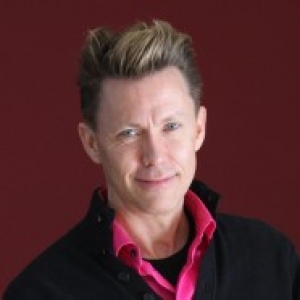Montreal has branded itself as the world center of a multi-billion dollar international enterprise: circus.
The capital of Quebec is home to three major companies — Cirque du Soleil, the 7 Fingers and Cirque Eloize — dozens of smaller ones, the National Circus School and an annual international festival that draws the world’s top circus talent.
Montreal’s emergence as the epicenter of circus is the focus of a new scholarly book, Cirque Global: Quebec’s Expanding Circus Boundaries (McGill-Queen’s University Press, 2016), co-edited by Charles Batson, Union professor of French, and Louis Patrick Leroux, associate professor of English at Concordia University.
The tipping point came in the 1980s, when strong governmental and community support — along with cross-fertilization of a lively theater and dance scene — launched the circus explosion, according to Batson. The 1976 Olympics played a role too, pushing high-caliber athletes into the same training and movement spaces as circus artists, he said.
While scholars have studied what some consider the “traditional” forms of circus — Ringing Bros. and Barnum and Bailey or the family-based circuses of Europe — this book is the first academic treatment of the nouveau cirque scene associated with Quebec. Batson and his colleagues hope the book stands as a model for developing circus scholarship across multiple disciplines including economics, theater and urban studies.
Batson notes that many critics argue that Cirque du Soleil, a billion-dollar juggernaut with large Vegas-style shows, has left behind what he calls the “grassroots, street arts, rough-and-tumble scene” of its beginnings. Other smaller companies — including 7 Fingers and Eloize — have found success through explicit moves toward the authenticity that Cirque du Soleil may have left behind. But there remains the question of long-term survival.
“In my opinion, these young and small companies can offer much to the circus scene, and happily there are the festivals, theaters, and grants that can offer at least some support,” he said. That support, he noted, is much greater in Quebec than in the American circus scene.
Batson, who had earlier studied cross-fertilization of the arts in Paris, said he was surprised to discover not just that Montreal serves a similar role today, but that there was not a large scholarly corpus around contemporary circus.
Batson finds the research both exciting and daunting. “I get to go to circus shows worldwide, as research,” he said. “I get to talk with talented people who create art on a daily basis. I get to work with other scholars who find the same joy I do in this field.” As for daunting, “there isn’t a large archive to draw on,” he said. “And it is only very recently that circus artists and scholars can find spaces to hang out or a similar vocabulary.”
Batson brings his research to his students through a course he teaches on Quebec. And he hopes to repeat a campus residency he arranged several years ago with circus artists from Montreal.
“It was quite amazing to have my French students doing movement and theater patterns with these international artists, along with theater and dance students performing on stage,” he said. “This was the perfect example of the multidisciplinary nature of the circus scene.”



